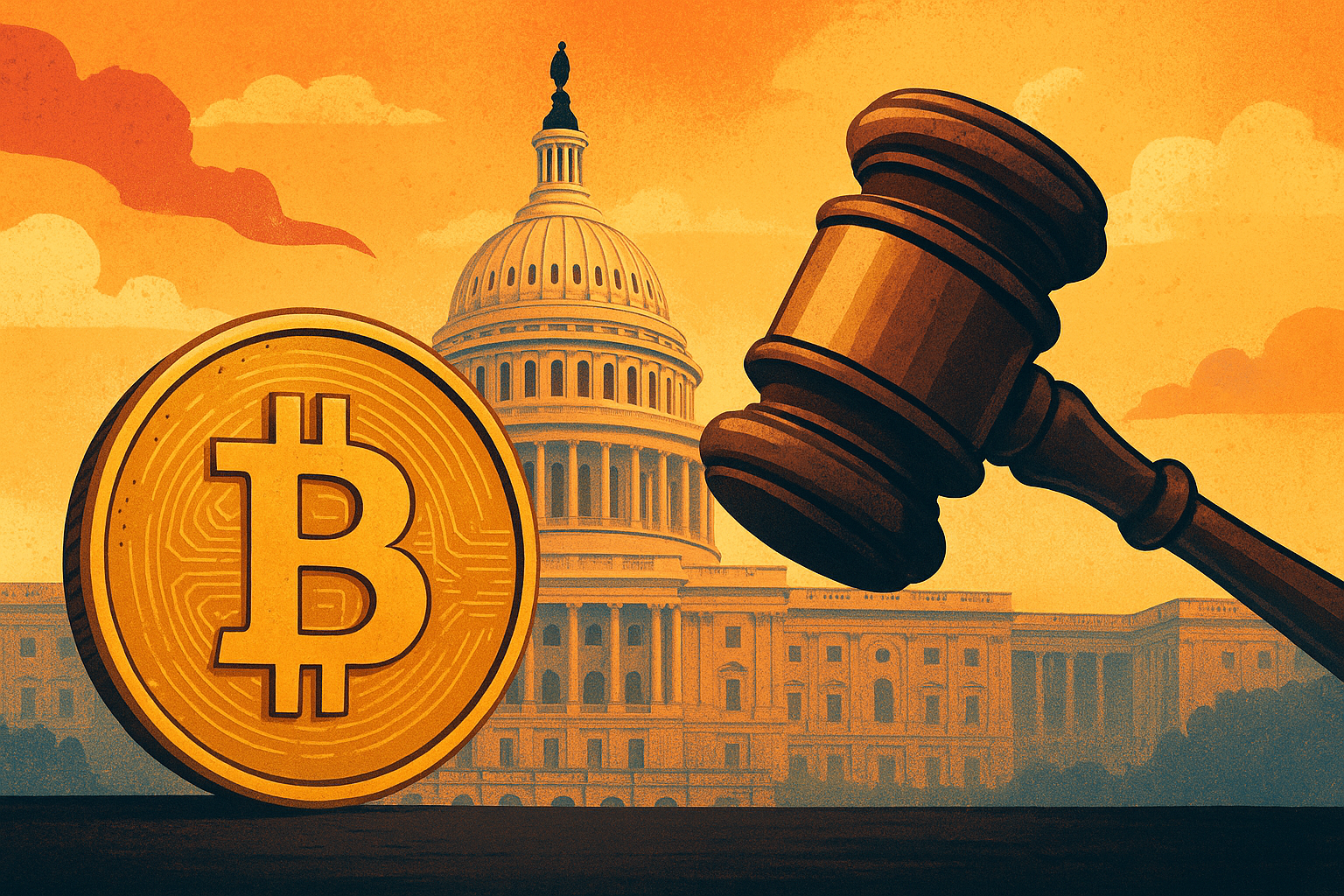Bitcoin hovers near $62,000, Ethereum slips below $2,400, and investor sentiment in digital assets remains subdued — not because of market fundamentals, but because Washington can’t agree on who should regulate crypto.
Weeks of negotiations in the U.S. Senate over a sweeping crypto market-structure bill have broken down, with lawmakers clashing over the core question: who should take the lead in overseeing digital assets — the Securities and Exchange Commission (SEC) or the Commodity Futures Trading Commission (CFTC)? According to Politico, the bipartisan effort aimed at clarifying jurisdiction over decentralized finance (DeFi) protocols and stablecoins has stalled once again, leaving the industry in limbo.
This policy gridlock arrives just as institutional participation in crypto markets appears to be slowing. Major tokens like Bitcoin and Ethereum drifted lower this week, according to CryptoNews, with volumes declining across U.S.-based exchanges such as Coinbase and Kraken. The hesitation reflects a broader sentiment: investors are wary of regulatory uncertainty, and that’s freezing fresh capital inflows into digital assets.
Regulatory Paralysis and Market Impact
The proposed legislation, once touted as the most comprehensive attempt yet to define U.S. crypto oversight, now risks being delayed until 2026. Lawmakers remain divided on whether digital tokens should be treated as securities or commodities — a distinction that determines everything from exchange registration to disclosure rules.
The SEC, led by Chair Gary Gensler, has argued that most tokens fall under its purview. The CFTC, meanwhile, seeks broader authority to oversee spot crypto markets, claiming it is better equipped to regulate derivatives and trading infrastructure. The stalemate has left both agencies operating in overlapping gray zones, leading to enforcement-by-litigation and inconsistent rulings.
Analysts at Bloomberg Intelligence note that “regulatory fragmentation in the U.S. continues to put domestic firms at a competitive disadvantage versus global peers operating under clearer frameworks.” Indeed, countries like the U.K., Singapore, and Canada have advanced more cohesive digital-asset regulations, drawing institutional investors that once looked to the U.S. as the innovation hub.
Why This Matters for Investors
For investors, the cost of uncertainty is mounting. A lack of regulatory clarity increases compliance risk, limits institutional participation, and depresses valuations of U.S.-based crypto ventures. Venture capital data from PitchBook shows that digital-asset funding in the U.S. fell 40% year-over-year in Q3 2025, even as Europe saw a 15% rebound driven by regulatory certainty under MiCA (Markets in Crypto-Assets).
Crypto-focused hedge funds, such as Pantera Capital and Galaxy Digital, have reportedly reduced exposure to DeFi tokens and shifted to Bitcoin and stablecoins as defensive plays. “Without clear rules, liquidity dries up, innovation slows, and valuations suffer,” says Michael Shaul, a digital-asset analyst at Fundstrat Global Advisors.
Meanwhile, trading platforms are lobbying for more consistent standards. XT.com, a Singapore-based exchange that recently expanded into Canada, cited “regulatory visibility” as a primary reason for prioritizing non-U.S. markets.
Future Trends to Watch
1. Institutional Migration: Expect continued capital reallocation toward jurisdictions offering regulatory clarity. Canada, with its approved Bitcoin ETFs and structured compliance standards, may see renewed inflows if the U.S. remains gridlocked.
2. Enforcement Acceleration: In the absence of legislative action, the SEC is likely to continue pursuing enforcement against exchanges, token issuers, and DeFi projects. Investors should monitor headline risk tied to lawsuits or settlements.
3. Stablecoin Growth Amid Uncertainty: Ironically, while crypto regulation stalls, stablecoins are expanding rapidly. Standard Chartered projects that dollar-backed stablecoins could pull as much as $1 trillion in deposits from emerging-market banks over the next three years, underscoring how regulation lags behind adoption.
4. Election-Year Rhetoric: With the 2026 election cycle looming, crypto regulation could become a campaign issue, with some lawmakers positioning themselves as pro-innovation while others push for tighter oversight.
Key Investment Insight
For investors, the message is clear: regulatory uncertainty equals volatility risk. The longer the stalemate persists, the greater the pressure on domestic crypto valuations and venture funding.
However, this environment also presents opportunities. Assets with strong institutional backing — such as Bitcoin, Ethereum, and regulated stablecoins — may benefit from a flight to perceived safety. Likewise, exchanges and fintech firms operating in clearer jurisdictions (like Canada, the EU, or Singapore) could attract capital fleeing the U.S. policy void.
Active investors should monitor:
- Updates from Senate committees and regulatory agencies (SEC/CFTC statements).
- Institutional flow data on major crypto exchanges.
- Market performance of regulatory-compliant digital assets.
In a market driven as much by policy as by price, clarity is the new catalyst. Investors betting on the next crypto rally may not need to watch the charts as closely as they watch Washington.
Stay tuned with MoneyNews.Today for daily investor insights on crypto, markets, and macro trends shaping the future of finance.





